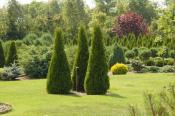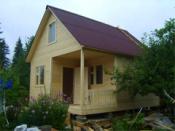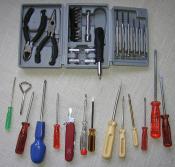Search
Login
DIY soundproofing
If you want real silence, take care of the complex insulation of the apartment.
Content
- Types of noise
- Protection on all fronts video
- Acoustic armor
- Sound absorbing materials
- Additional sound insulation in the form of frame cladding
- Installation of a blind partition
- Some soundproofing samples
Types of noise
Our life is constant stress. And all because we make a lot of noise. The roar of the streets, the nightlife of neighbors, an unexpected construction site under the windows, etc. Our houses are literally shaking from all this, while our monolithic multi-storey houses are not adapted to the sound insulation of the metropolis.
Noises are different.
Our ears suffer from airborne noise: TV shows, radio, conversations, traffic noise.
Sometimes, a sound wave can be felt with the whole body.
Mechanical vibrations caused by noise directly affect walls, partitions, they, in turn, transmit it to structures conjugate with neighboring rooms.
In this way, structural noise is propagated.
The main culprits are:
-vibration of communications, for example water or sewer pipes;
-work of fixed equipment, for example, elevator, ventilation, pumps;
- direct impact on the structural elements of the house, for example, the movement of furniture.
The most difficult and unpleasant is the impact noise in the form of stomping, slamming the door, etc.
Protection on all fronts
Currently, there are a large number of materials that can withstand the spread of noise.
Some materials absorb sound, some reflect sound, and some insulate it.
The difficulty of success for silence is that in order to achieve the goal it is necessary to use several types of materials.
For example, if a family lives above you, whose children like to jump, throw heavy objects on the floor, and their parents constantly scandal and arrange noisy gatherings, then additional insulation of the ceiling without wall insulation will probably not lead to the desired result. Since the activity of neighbors will be distributed structurally in the body of building materials through rigid joints of structures.
Competent acoustics experts advise protection on all fronts - floor, ceiling, walls.
Unfortunately, it costs a lot of money.
Acoustic armor
Protecting the apartment from noise boils down to creating an inner carapace of several layers of materials that vary significantly in density and stiffness.
The oscillation of each layer under the influence of a sound wave will also vary with the correct engineering calculation, as well as if the installation is carried out correctly using the right materials - gradually all vibrations will be damped in the structure.
If the work is done incorrectly, the amplitudes can not only be minuscule, but also add up, and this threatens to produce the opposite effect.
Specialized fibrous, porous slabs, granular fillings, air layers contribute to the damping of sound.
It is necessary that there are no rigid connections between the concrete and brick base and sound protection, otherwise the design will fluctuate as a whole and the sound damping effect will not occur.
All of the above applies to multilayer frame partitions.
Sound absorbing materials
Materials according to the nature of sound absorption are divided into groups.
Thanks to the holes, perforated materials inhibit noise.
Membrane materials such as: plywood, soundproof fabric, thick cardboard - have the ability to reduce sound due to energy costs for forced vibrations of obstacles.
The most common, porous fiber absorbers, such as fiberglass based mineral wool,
stone wool.
When using them, four processes proceed at once:
the first - scattering of the sound wave due to the viscosity of the air, which is a lot in the interfiber space;
second- air friction on the fibers, the total surface of the fibers is also large;
the third- the fibers rub against each other;
the fourth - there is a dissipation of energy due to friction of particles inside the fibers.
Therefore, the acoustic properties of fibrous materials are great.
Additional sound insulation in the form of frame cladding
Lightweight frame claddings with plasterboard or gypsum plating are often used for additional sound insulation.
To do this, a wooden or metal frame is attached to an existing wall or ceiling, gypsum plasterboard or gypsum-fiber sheets are attached to it, sometimes in several layers.
At the same time, the junction of the frame and the casing with the wall, floor and ceiling is insulated with elastic gaskets, for example, VIBROSTEK-M tape.
A sound absorber is placed between the base and the drywall sheets, most often fibrous, on the basis of stone wool (PAROC, ROCKWOOL ACOUSTIC BATTS, Schumanet-BM) or mineral fiberglass (ISOVER Soundproof, KNAUF Insulation Acoustic partition, Heat KNAUF Cottage Noise, URSA Soundproof, URSA.
It should be noted that the use of these materials significantly reduces noise.
Installation of a blind partition
If you want to separate an office in a drawing room, to erect a partition is not difficult.
But during installation, it is necessary to take into account several subtleties.
Namely, the new wall is not brought to the ceiling to a height of 15-20 mm.
To ensure good sound insulation between rooms, the gap is filled with elastic soundproofing material.
To minimize the likelihood of negative resonance oscillations, partitions are installed on the same pillow along the support line to the floor.
The joints of drywall sheets, along the entire length, are glued with a reinforcing tape, and carefully putty.
The partition frame itself can be made of metal rails from rack profiles, to prevent sound resonance, a rubberized or polyurethane sealing tape is placed under the profile.
Some soundproofing samples
PAROC
ROCKWOOL ACOUSTIC BATTS
Shumanet-BM
ISOVER Sound Protection
KNAUF Insulation Sound Barrier
HeatKNAUF Cottage
URSA GEO noise protection





